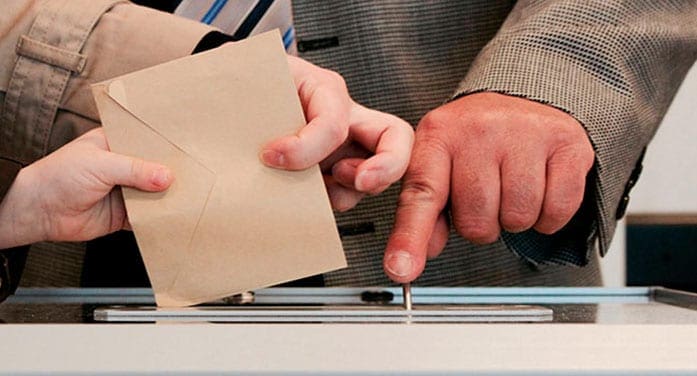 Canadians want greater congruence between votes and legislative seats. And we want better representation of women, minority groups and ideas in the houses of government. Those powerful incentives make proportional representation attractive.
Canadians want greater congruence between votes and legislative seats. And we want better representation of women, minority groups and ideas in the houses of government. Those powerful incentives make proportional representation attractive.
The main draw of proportional representation (PR) is that the seats that parties receive in elections correlate roughly with their share of the popular vote.
The degree of proportionality and other variables differ greatly among the numerous countries using some form of PR. The feature they do share is multi-member districts or constituencies that vary in size. In some cases, like Holland, one district encompasses the entire country.
So let’s look briefly at how PR systems work, focusing on those using party lists (the set of names each party offers on the ballot) and the single transferrable vote. The emphasis will be less on the mechanics of these alternatives than on their implications.
There are two types of list PR systems: the closed list and the open list. In closed list PR, candidates are ranked by the party and voters must accept the party rankings. Parties receive seats proportionate to their share of the vote in that electoral district. If a party wins, say, three of seven seats, the top three candidates on its list are declared winners.
In open list PR systems, voters are not bound by the party’s preferred order. They can express a preference for one or more candidates or re-order the entire list.
The single transferrable vote (STV) is rarely used for lower house elections but it was recommended by the British Columbia Citizens’ Assembly on Electoral Reform. This model reduces the influence of political parties even further: voters are free to rank candidates, ignoring party wish lists and even spreading their support across party lines. This provides opportunities that do not exist in other systems, for small parties and independents.
Marking ballots in PR systems is certainly more onerous than marking a single X. But it is in the counting of votes that PR gets complicated. The complexity of various methods of allocating seats cannot be explained in a short column, but there is a wealth of material available on the Elections Canada website, among dozens of others.
So, what’s not to love about PR?
Perhaps the strongest objection is to what happens post-election. Although one party can get a majority, more often one of the major parties must approach smaller parties to form a coalition. Negotiations take place behind closed doors to determine who will form government. Discussions might drag on for days or weeks, and the resulting arrangements may be disappointing and cause resentment among voters.
In addition to uncertainty regarding the policy direction the new government will pursue, coalitions may also be unstable.
In closed list PR, critics point out that the link between voters and their representatives is weak. Because MPs are beholden to the party, they may neglect constituents.
Although open list PR strengthens the role of voters, the intra-party competition for a favourable rank on the list is an unhealthy byproduct of this process.
However, STV is the most problematic. A majority government is unlikely in this system and very small parties can wield a disproportionate amount of power. Major parties have to bargain with other parties and independents to reach majority status in the legislature.
Australia uses STV in its Senate and in recent years the success of a number of micro-parties and independents has made life difficult for the government. Two such parties, the Motoring Enthusiast Party and Family First, each have a single seat in the upper house. And the balance of power was held briefly by the Palmer United Party led by Trump-like leader Clive Palmer. The Australian government of Prime Minister Tony Abbott suffered humiliating defeats because of the dynamics in the upper house.
As PR systems vary so greatly, it would be possible to custom design one that addresses concerns the Canadian electorate might have. Perhaps a hybrid system that combines our current system with some elements of PR?
However, no matter which model is chosen, even some elements of proportional representation will represent a sea change from our current winner-takes-all system. One-party governments will not be the norm and it will require a cultural shift to cope with the new political reality.
Doreen Barrie is an Adjunct Assistant Professor in the Political Science Department at the University of Calgary.
Doreen is a Troy Media contributor. Why aren’t you?
The views, opinions and positions expressed by columnists and contributors are the author’s alone. They do not inherently or expressly reflect the views, opinions and/or positions of our publication.



Ms. Barrie’s column “Putting proportional representation to work” contains a number of inaccuracies.
Firstly, I must ask why she chooses to focus on list PR, since no one has recommended that system for Canada. Why not focus on something that’s in the running?
Now to her factual errors:
1. “Marking ballots under PR is certainly more onerous.” Not necessarily. Under the STV system she just mentioned, it can be as simple as marking a single number 1 beside one name (half the work of making an X!)
2. “Coalitions may be unstable.” False: the research shows they do not result in more elections. Between 1945 and 1998, countries using FPTP averaged 16.7 elections each, while countries using PR averaged 16 elections (Pilon, 2007). And those numbers include Italy and Israel, which use unstable systems that have never been proposed for Canada!
3. “STV is most problematic because majority governments are unlikely under this system.” In fact, majority governments are unlikely under ALL PR systems, not more so under STV. And that is the whole point: we would be eliminating the false majorities where 39% of the vote magically adds up to 54% of the seats.
She points out that coalition arrangements might be disappointing to voters – perhaps Ms. Barrie has failed to notice the level of frustration this current system has resulted in, when the majority of voters can simply be ignored? Perhaps she hasn’t noticed that under this system, we have swings back and forth where consecutive majorities waste a lot of energy undoing their predecessors’ policies?
Getting rid of false majorities tends to let countries develop their paths through consensus and collaboration, as the research once again shows.
I encourage your readers to actually look past the negative perspective Ms. Barrie presents and give equal consideration to the benefits that PR would bring. We need to have a diversity of opinion represented in the House of Commons, as has become the norm in every progressive government around the world. The era where one party can have full power with the support of only a minority of the population is hopefully over.
I sincerely hope Minister Monsef follows through on the Liberals’ commitment to “make every vote count.”